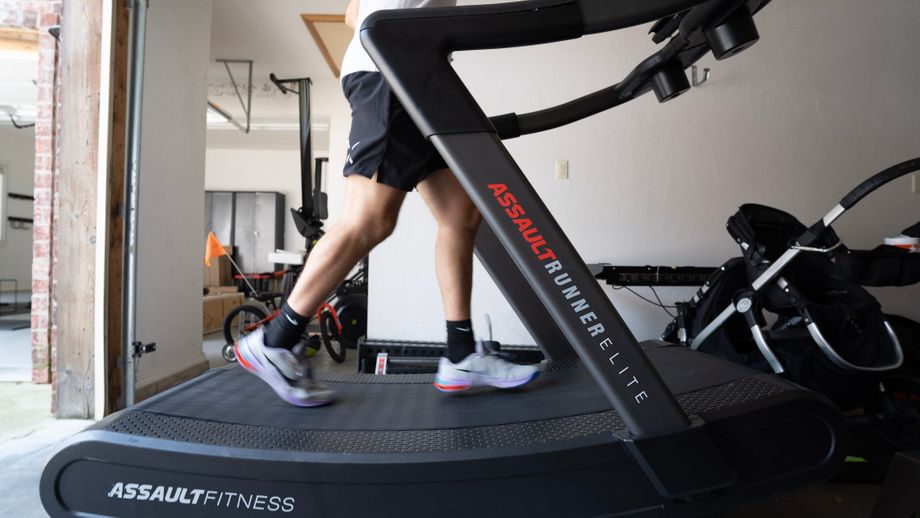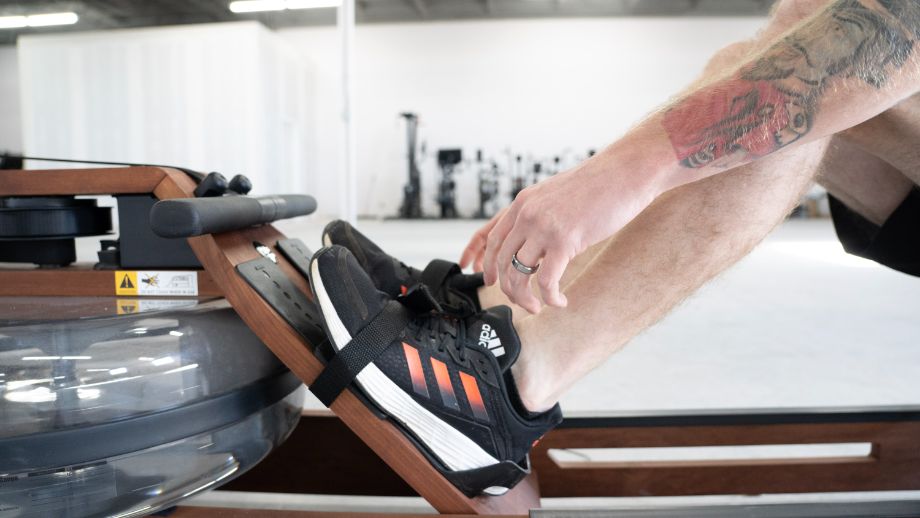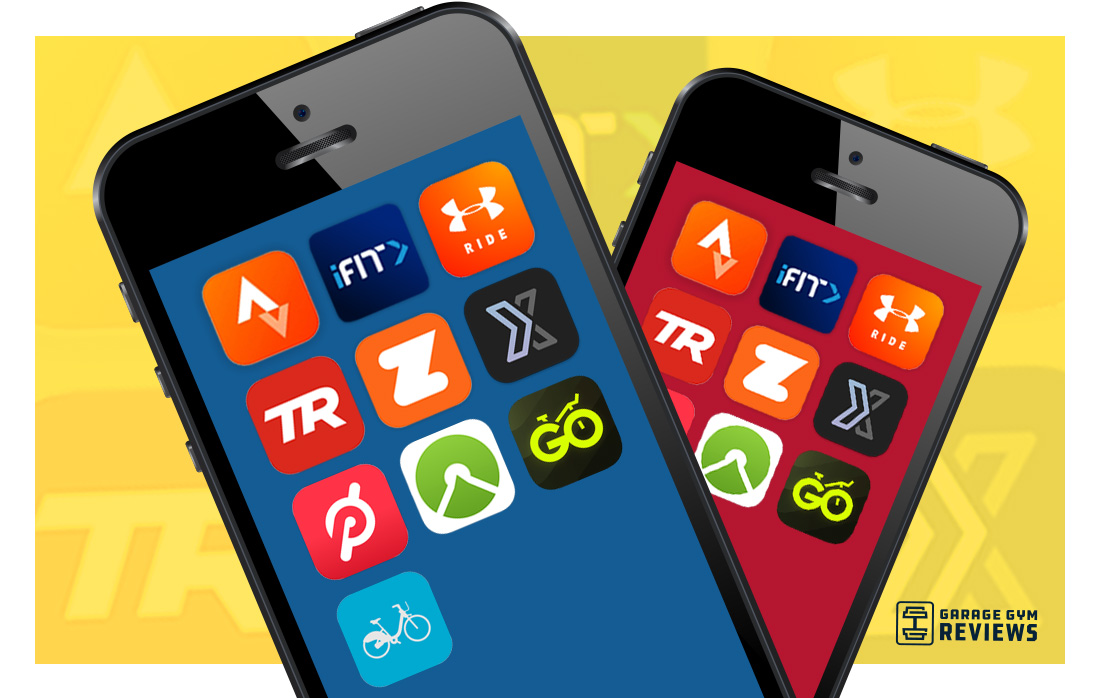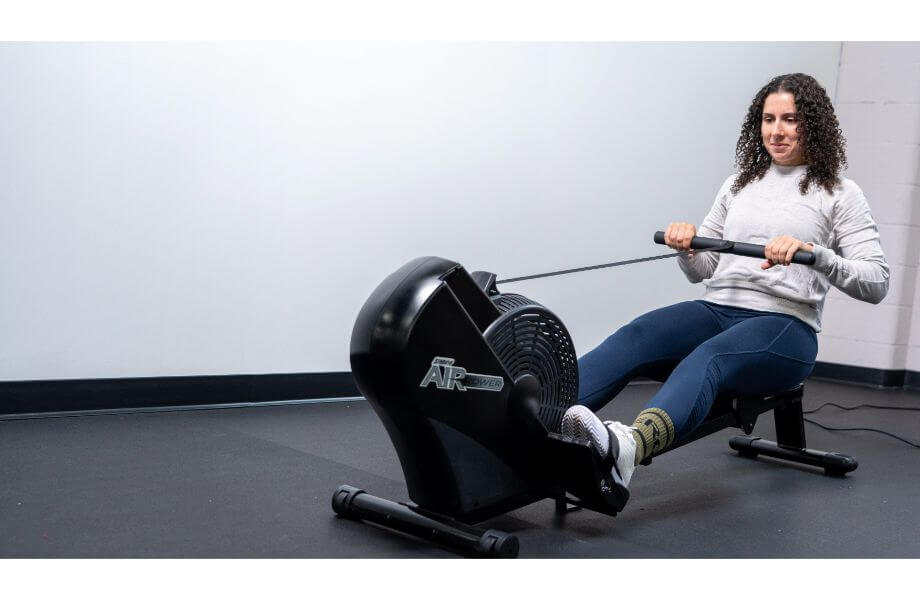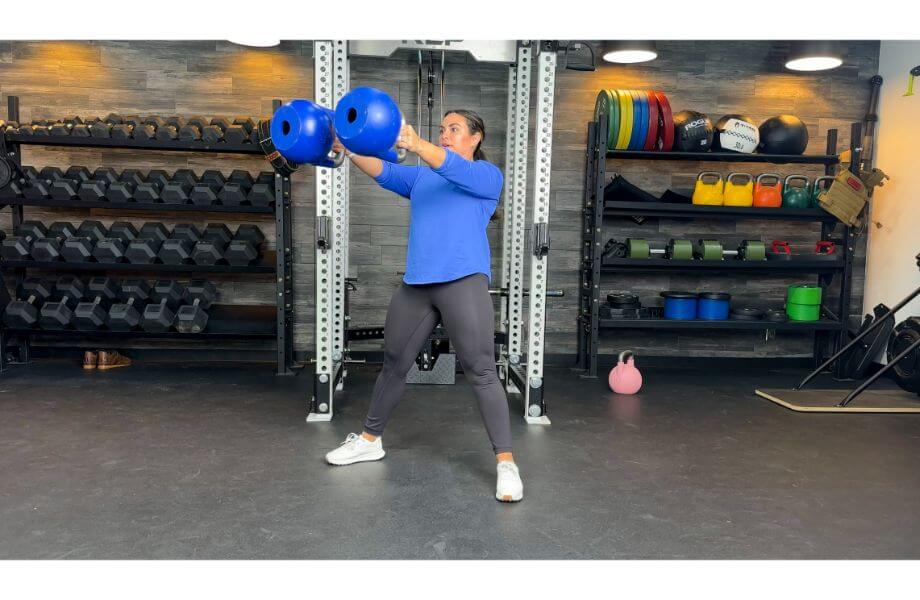Improve your speed, endurance and more with workouts that take less than 30 minutes
Have you ever done a killer workout that left you breathless? You know the kind: Short, intense, and marked by the sweat angel you leave on the floor after you collapse.
I gotta say, those are the workouts I love to hate and hate to love. And that’s what high-intensity interval running is for me. It packs a tremendous amount of value into a short amount of time. And it hurts – but it hurts so good!
I sat down with Amanda Capritto, a personal trainer and writer here at Garage Gym Reviews, to talk about why we should do a HIIT treadmill workout and where to get started. Listen up, then lace up your shoes and get going!
6 HIIT Treadmill Workouts
Sprint Intervals Treadmill Workout
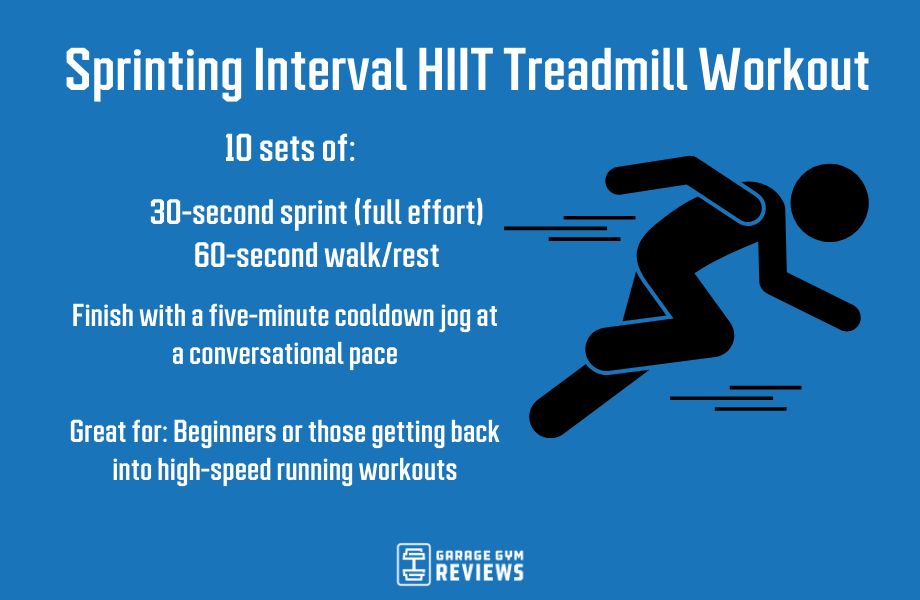
For a sprint interval workout, you’ll want to incorporate a longer rest period to allow for higher intensity during the work interval. If it’s been a while since the last time you did a full-effort sprint, it’s a good idea to start with longer work intervals at lower intensity (30-60 seconds) before gradually progressing. Although you can perform sprint intervals on any treadmill, manual treadmills are ideal because you can change pace rapidly and hit high speeds without having to touch a button.
RELATED: Best Manual Treadmill
This sprint interval workout features a 1:2 work-to-rest ratio, which is a good starting point if you’re a beginner or just getting back into high-speed running workouts:
Start with a five-minute warm-up jog at a conversational pace. Then move to:
- 10 sets of:
- 30-second sprint
- 60-second walk/rest
Finish with a five-minute cooldown jog at a conversational pace.
How to Advance the Workout
There are a number of ways to progress this workout. First and foremost, your goal should be to run faster on these intervals. One way you can gauge your progress is by tracking the total distance you cover across all of the sprints. I recommend keeping intervals the same for at least two sessions before changing them.
If you’ve got more time available, try bumping the work-to-rest ratio to 1-to-3, while keeping total running time the same. Shorter work durations and longer rest periods will allow you to sprint at faster paces. Here are two examples of modifying the sprint intervals in this fashion:
- Example 1: 10 rounds of 30-second sprint, 90-second rest
- Example 2: 15 rounds of 20-second sprint, 60-second rest
Beginner HIIT Treadmill Workout
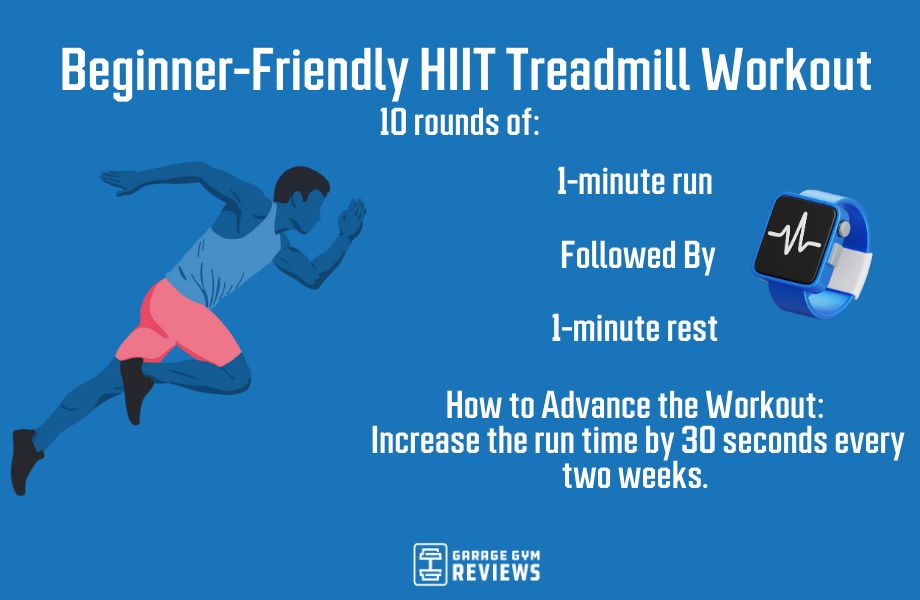
Maybe you’re just getting started on your fitness journey; if so, one-minute intervals repeated with a 1-to-1 work-to-rest ratio is a great place to begin. The work duration is short enough for most beginners to be able to run without having to stop, and the rest interval is long enough to allow you to keep up intensity from round to round.
Start off with the warm-up protocol detailed earlier in this article, then aim for 10 rounds of intervals on this workout. If you aren’t able to make it through 10 intervals the first time you take on this workout, don’t worry. Just approach it with a more conservative pace the next go around, and work towards progressing in pace or interval length from there.
10 rounds of:
- Run one minute
- Rest one minute
How to Advance the Workout
This is a tried-and-true protocol that’s commonly utilized in HIIT research studies. You don’t necessarily need to change it if you’re continually able to run faster on the intervals. However, if you’re looking to see improvements in body composition or endurance performance, it’s a good idea to progress toward longer work intervals. Here’s an example of how you might progress the work-to-rest ratio over the course of six weeks.
- Weeks 1 and 2: 10 rounds (One minute run, one minute rest)
- Weeks 3 and 4: Eight rounds (1½ minute run, one minute rest)
- Weeks 5 and 6: Seven rounds (Two minute run, one minute rest)
HIIT Treadmill Workout in Under 20 Minutes
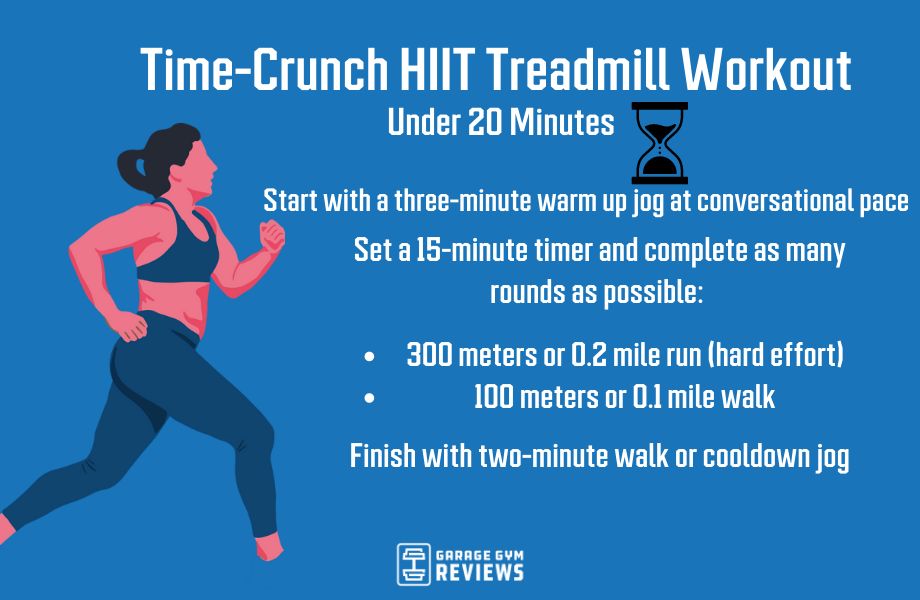
Really pressed for time? Get in and out with this 20-minute routine.
Start with a three-minute warm-up jog at a conversational pace. Then, set a 15-minute clock and complete as many rounds as you can of:
- 300 meters or 0.2 mile run (hard effort)
- 100 meters or 0.1 mile walk
Finish with a two-minute walk or cool-down jog.
How to Advance the Workout
For someone who is short on time, you probably don’t have the option to make this workout any longer. Instead, you just need to run faster. Aim to cover a greater total distance over the course of those 15 minutes each time you perform this routine.
High Incline HIIT Treadmill Workout
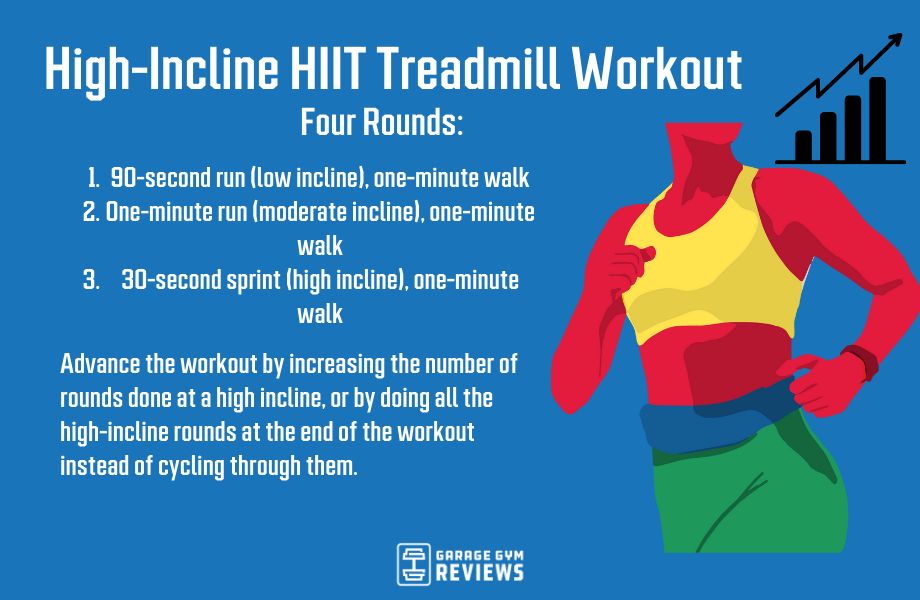
One of the great features of foldable treadmills is being able to adjust the incline of the running surface. Running on an incline will bump up the intensity on any HIIT treadmill workout. This workout in particular rotates through intervals of low-, moderate-, and high-incline running, separated by brief rest periods where you’ll make incline adjustments.
4 Rounds:
- 90-second run (low incline), one-minute walk
- One-minute run (moderate incline), one-minute walk
- 30-second sprint (high incline), one-minute walk
How to Advance the Workout
You can make this workout harder by performing all of the high-incline intervals at the end of the workout, instead of rotating through different inclines. Additionally, you can do a higher number of intervals at the high incline. Here’s an example that does both:
- Three rounds: 90-second run (low incline), one-minute walk
- Four rounds: one-minute run (moderate incline), one-minute walk
- Five rounds: 30-second run (high incline), one-minute walk
Low Impact HIIT Treadmill Workout
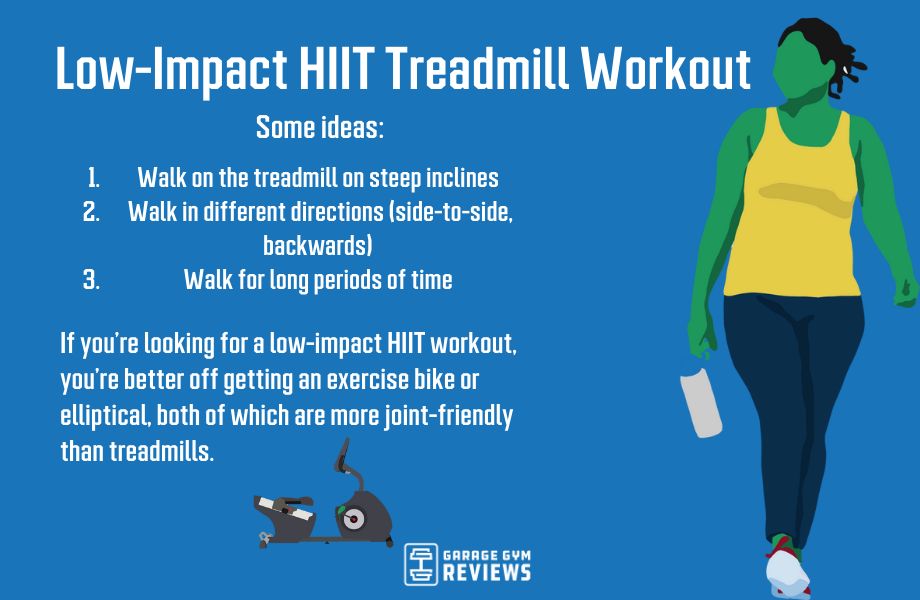
If you’re looking for a low-impact HIIT workout that you can do on the treadmill, you’re better off choosing a cardio machine that doesn’t involve repeated impact, such as an elliptical, rower, bike, or ski erg. You can still perform low-impact workouts on the treadmill by walking at steep inclines and in various directions (backward or side-stepping), but it won’t quite be HIIT since the intensity is limited.
RELATED: Biking vs Walking
HIIT Treadmill Workout to Burn Fat
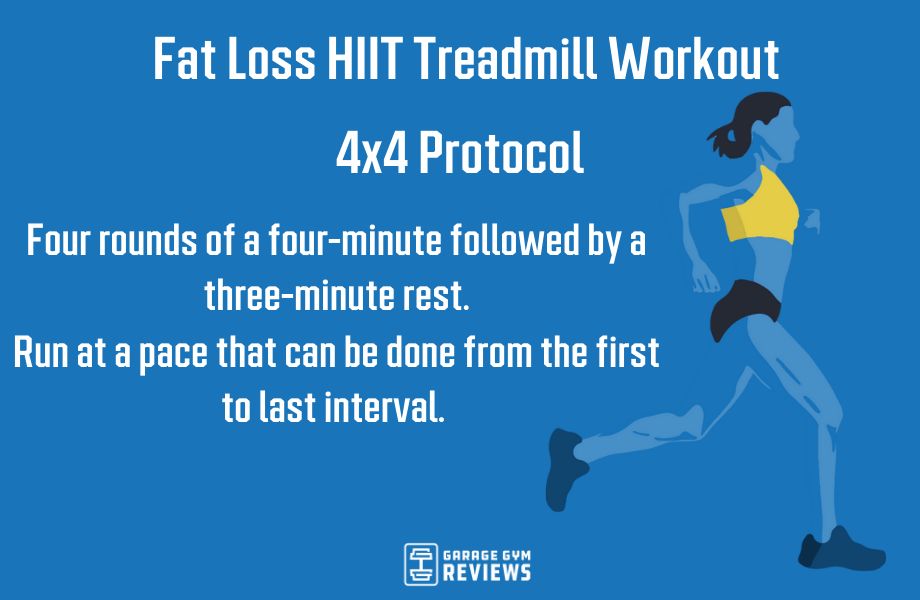
If you’re training to burn fat, try out the classic 4×4 protocol. For this workout you’ll perform four rounds of a four-minute run with three-minute rest breaks between. Your goal is to hold the fastest pace that you can repeat from the first interval to the last. This means you don’t want to empty the tank on the first rep. Rather, the first rep should feel around 8-9 RPE, and that rating will gradually climb with each rep.
Recognize that you can’t out-train a bad diet, so keep in mind that a HIIT workout will support your weight loss efforts but shouldn’t be a substitute for dietary intervention.
How to Advance the Workout
If you’re able to cover the same distance across all four intervals, increase your pace on the next workout so you’re running further in the same amount of time. Secondarily, you can add a fifth interval to this routine. Once you’re able to run consistent distances across all five intervals, try lengthening out the intervals to five minutes, and start back with four intervals again.
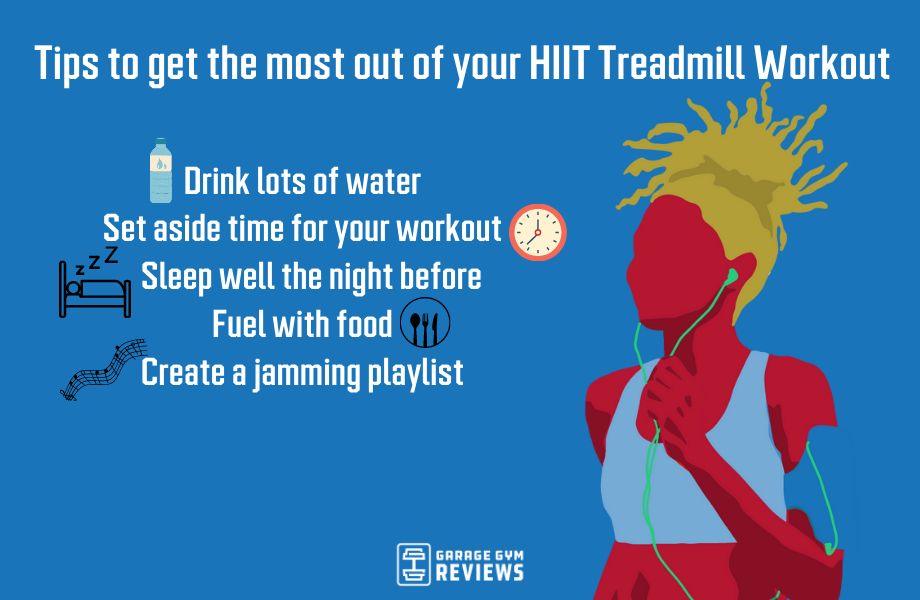
What Is High-Intensity Interval Training (HIIT)?
High-intensity interval training (HIIT) is any workout that includes both periods of intense exercise and short periods of recovery. HIIT treadmill workouts can be as short as four minutes and upward of 20 to 30 minutes long.
RELATED: 30 Minute Treadmill Workout
Overall, HIIT is a powerful tool for improving your conditioning as the rest periods between work bouts allow you to perform at a higher intensity during your work interval than you would otherwise be able to sustain continuously.
Traditional cardio machines such as treadmills, exercise bikes, and rowing machines are great options for a HIIT workout, but you could also perform a circuit or CrossFit WOD with an interval structure to get a similar effect.
In this article, we’re going to focus on HIIT treadmill workouts.
RELATED: HIIT Bike Workout
Benefits of a HIIT Treadmill Workout
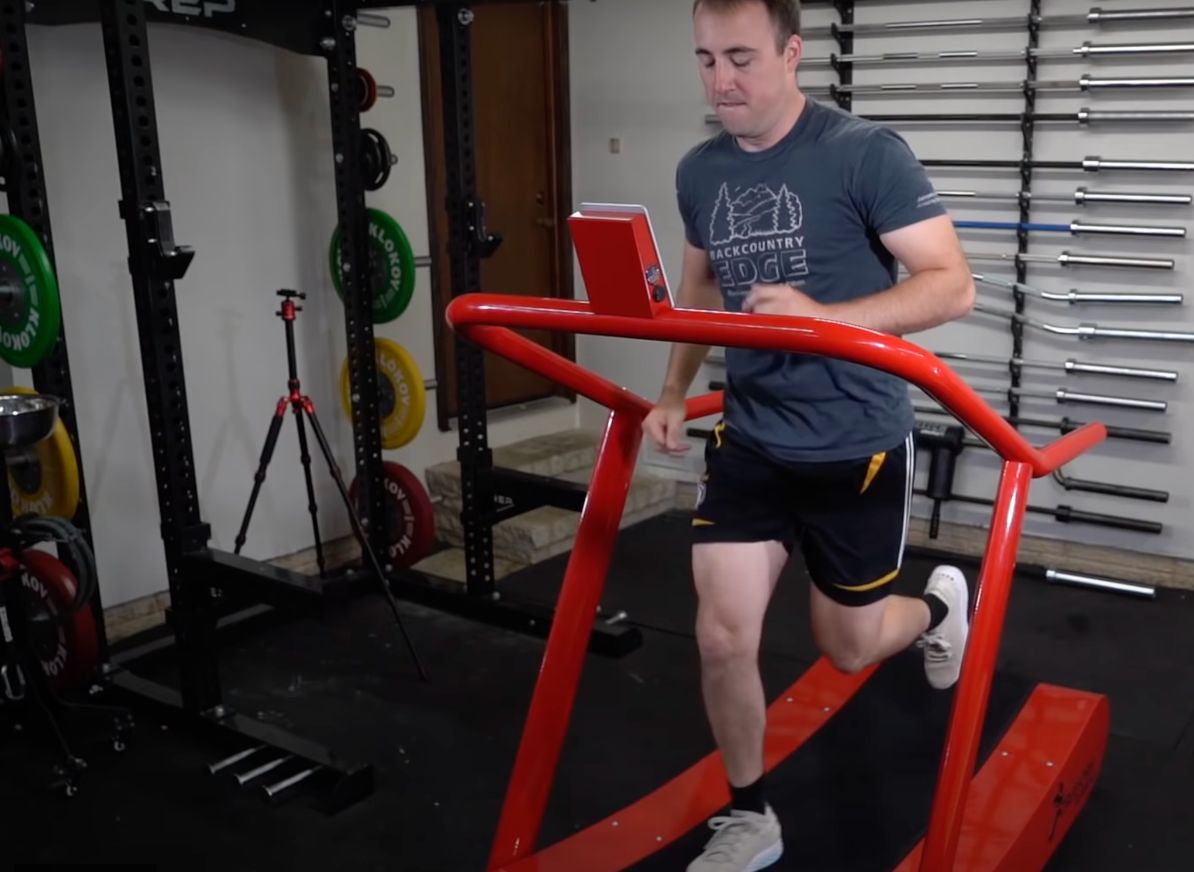
Treadmill HIIT workouts allow you to run with more intensity over a shorter period of time. Like many forms of exercise, HIIT workouts can help reduce stress and anxiety, but it also provides a number of unique benefits. They are a great way to ease your way into running without the stress of having to make time for long cardio sessions.
Low-intensity steady-state workouts (LISS), such as going out to run six miles, can be hard on the body, especially if you haven’t done much in the past. HIIT workouts are actually way more efficient and provide you with many of the same benefits without the time commitment and mental discipline required for a longer run.
Countless studies have found that running intervals can improve aerobic capacity, endurance, exercise tolerance, and your VO2 max, which refers to how much oxygen your body can use as you exercise. The higher the number, the longer you’re able to endure high-intensity exercise, and thus, the fitter you become.
Cardiovascular exercise can improve heart health and lung capacity, and lead to increased weight loss, according to Dr. Rachel Eidelman, board-certified cardiologist. She states that, “As we get older, heart health and lung capacity become even more critical for disease prevention.” Recent studies show that HIIT training can improve resting blood pressure, metabolic capacity, and heart rate reserve without compromising cardiac function in sedentary aging men.
RELATED: Best Treadmill Workouts
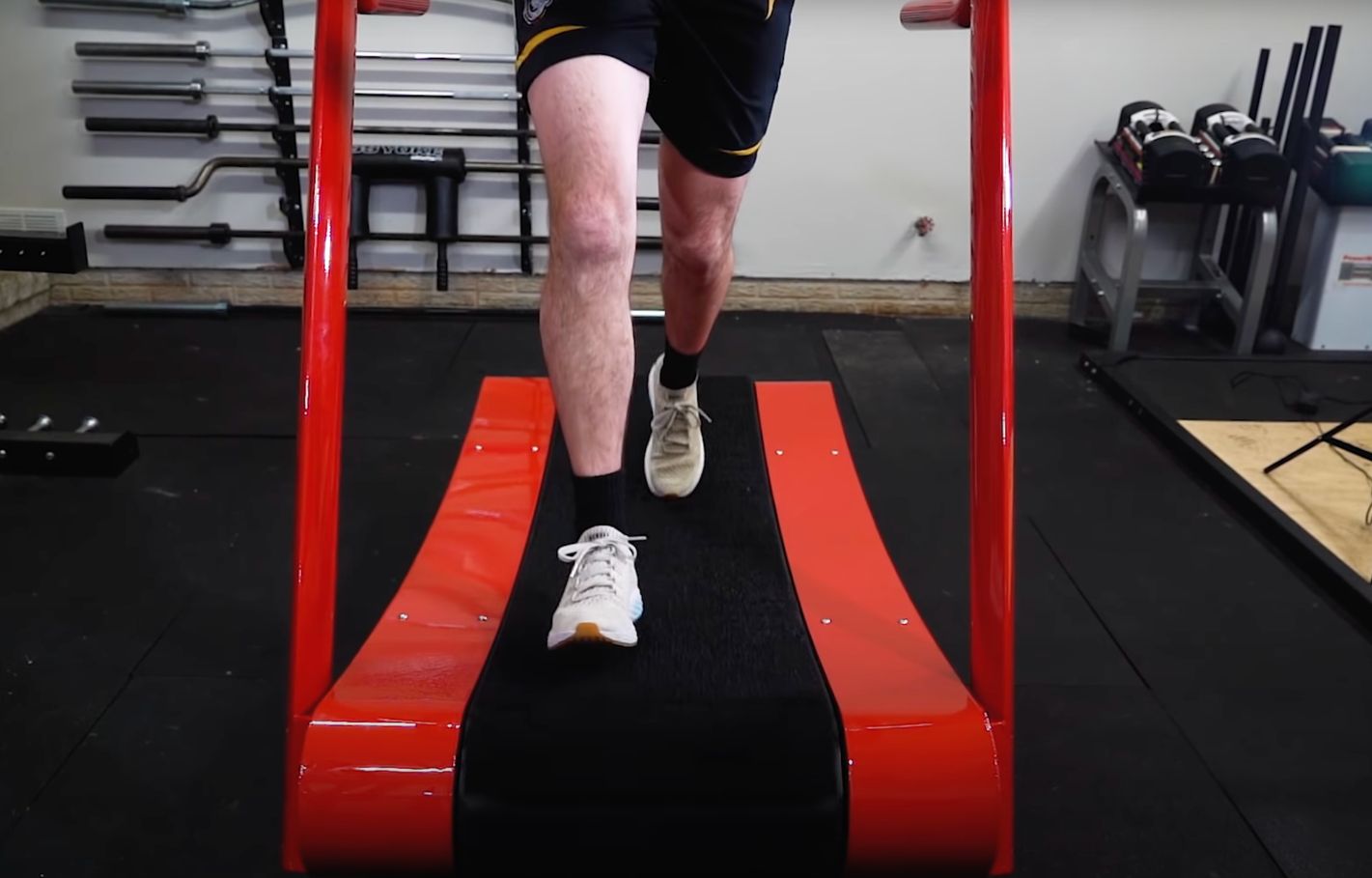
Improved Anaerobic Capacity
As a bonus, when we do high-intensity training, we are tapping into our anaerobic energy system. Why does this matter? As Amanda Capritto, certified personal trainer and staff writer at Garage Gym Reviews explains, our anaerobic system is used when the body needs energy quickly, like during sprints or heavy weight training. When doing slower workouts, like running a 5K, we can rely on oxygen to generate energy. During anaerobic training, we don’t get as much oxygen and instead have to break down stored glucose for energy sources.
Amanda explains, “When you train your anaerobic system, you teach your muscles to work without oxygen. The more you push, the more you increase your thresholds for anaerobic work.”In the same way, anaerobic exercise is thought to increase the lactic threshold, which is the point where the pain you feel in your muscles forces you to stop. As you increase that threshold, you’re able to push yourself harder and/or farther during workouts before failing due to fatigue.”
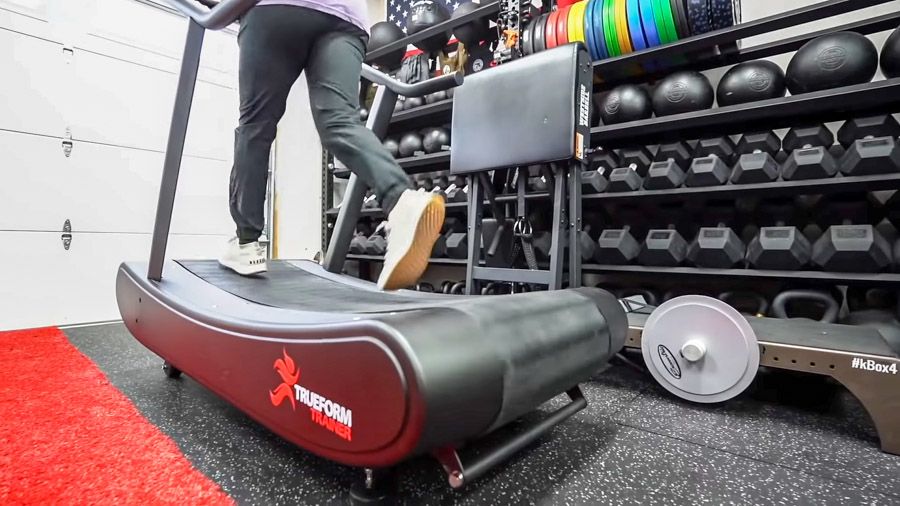
Some other great benefits to HIIT running include:
- Maintain muscle mass: We know progressive overload, pushing the body to its limits, is important to get results and HIIT running will get you there far quicker than steady-state cardio. Unfortunately, no matter how hard you run, running does not build muscle in the same way strength training does, but HIIT running can help maintain the muscle you do have, so you aren’t sabotaging your own progress.
- Does not decrease testosterone: Contrary to popular belief, a study looking at HIIT running found that it can actually lead to a slight increase in free testosterone, making it an appropriate addition to most strength training programs.
- HIIT running can boost performance: Think about it, are you more likely to push yourself harder doing one-minute sprints or running for 10 minutes straight? Most people can work much harder when they know it’s only for one minute, so ultimately you spend more time working at a much higher intensity throughout a workout.
- HIIT exercise is helpful for endurance athletes: A 2016 study found that swapping out two steady-state cardio sessions for HIIT sessions in trained rowers resulted in more significant improvements in a 2,000-meter timed trial than those who only did steady-state cardio.
Useful HIIT Terms To Know
If you’re new to HIIT training, here are a few terms that you’ll want to be familiar with:
- Intervals: Training that alternates between periods of higher intensity and lower intensity activity, based on either time or distance covered.
- Recovery Period: The time between work intervals, intended to allow heart rate to decrease before the next intense effort. Recovery periods may consist of complete rest or low-intensity activity.
- Rate of Perceived Exertion (RPE): A subjective rating of how demanding training feels (usually on a scale of 1-10).
- Steady-State Cardio: Exercise performed at a sustainable pace where heart rate remains stable. Steady-state cardio generally requires low-to-moderate intensities (60-85% of max heart rate).
- Tabata: A standardized HIIT training protocol that typically consists of eight 20-second work intervals, interspersed with 10-second rest periods. Because the total time is so short (four minutes), this protocol is meant to be performed at maximal intensity.
- Low-Impact: Modalities of exercise—like walking, biking, rowing, or swimming—that don’t involve the impact of repetitive landing on the ground characterizing running or jumping rope.
- Treadmill Incline: The slope grade of the treadmill surface, which can be adjusted on most foldable treadmills to simulate running uphill or even downhill on some machines.
How to Get Started With HIIT Treadmill Workouts
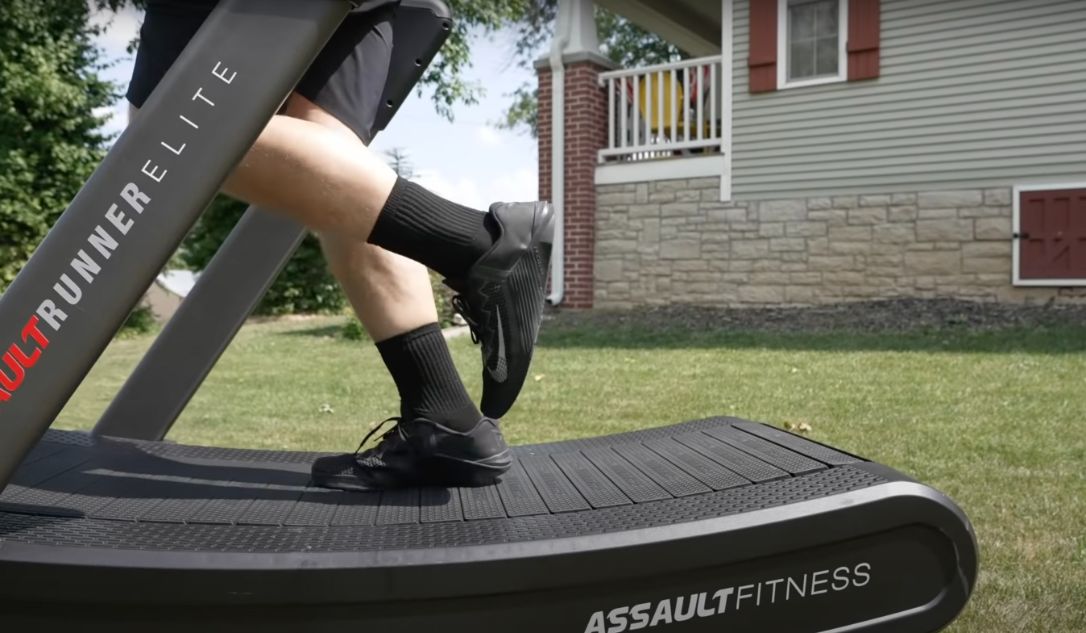
If you’re just getting started with HIIT training, it’s best to start with short HIIT workouts. You can add in a HIIT running workout on days that you are not doing heavy strength training, or you can squeeze in a quick, high-intensity session after you lift. Amanda tells us, “You generally want to lift before running, so you aren’t going into your strength workout fatigued, compromising your power and form.”
Start Short
Tabata workouts are simple and a great place to start if you haven’t done much HIIT running before. To do this, complete eight rounds of 20 seconds of intense work, followed by 10 seconds of rest. You may have seen this pattern before with other movements, like squats or burpees, but it’s also super effective when paired with sprints. Tabatas make for a great workout finisher or a way to get the blood flowing when you need to break a sweat in a short period of time. You can use our Tabata Timer guide to get you started.
Improve Conditioning
If you’re a beginner who wants to build running endurance, you can add in longer HIIT running workouts a couple of days a week. Start with a one-minute running interval followed by a one-minute walk, and repeat this for 20 to 30 minutes. Once this starts to feel easy, you can gradually increase the duration of the running portion and decrease the time spent walking. To be clear, these kinds of workouts are most effective when you push yourself hard during the running intervals, your body should feel like it needs the rest breaks!
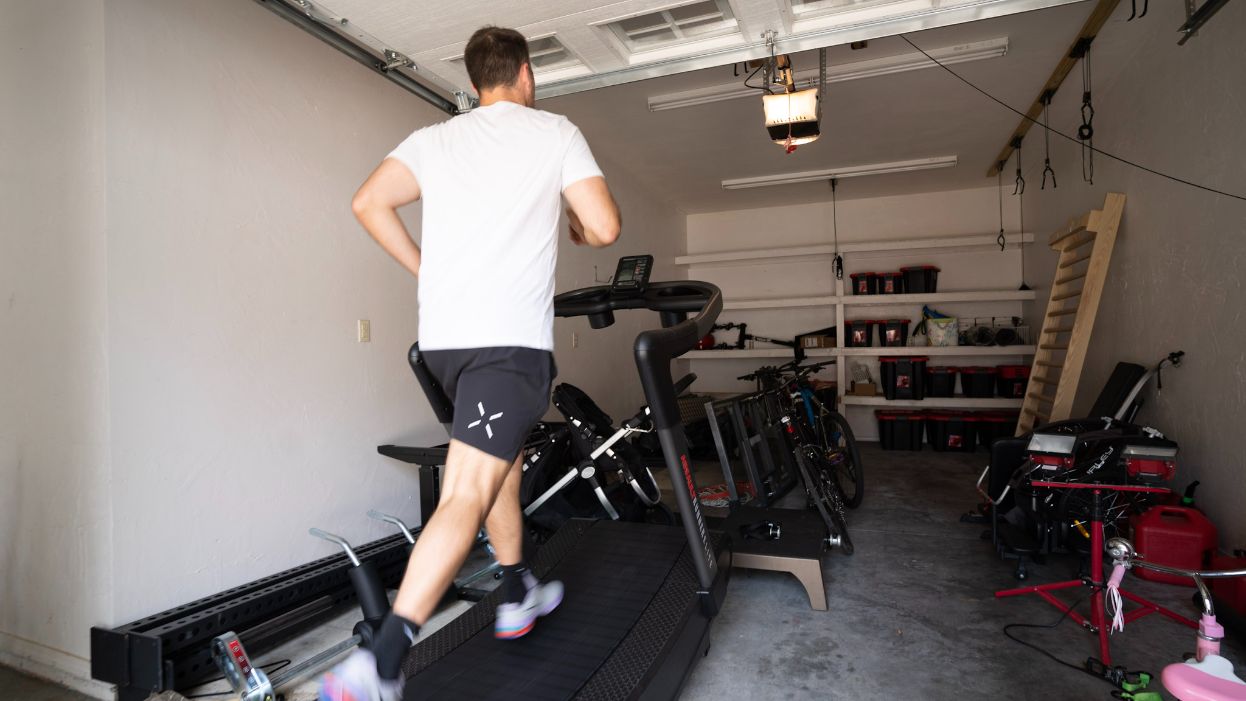
Build Leg Endurance
Lastly, if you’re an intermediate runner and want to increase your lactic threshold and overall power, treadmill or hill sprints are a great way to accomplish this. Try alternating between incline sprints and walking, aiming to sprint for 20 to 45 seconds. Once again, these sprints should leave you near breathless, and you will definitely feel this in the legs and glutes.
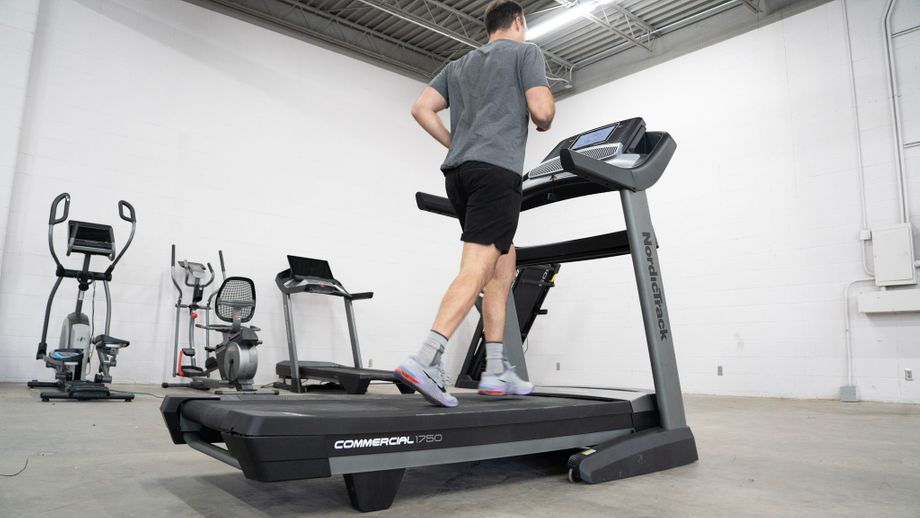
How to Monitor Your Heart Rate During HIIT Treadmill Workouts
According to the Center for Disease Control (CDC), your heart rate during vigorous-intense intervals should be around 77% to 93% of your max heart rate. To estimate max heart rate, the CDC suggests subtracting your age from 220.
Unfortunately, it’s hard to manually take your heart rate while exercising. That’s where devices like fitness trackers come in. You can see in real-time what your heart rate is. While these aren’t always completely accurate, they could help you gauge your intensity as you exercise.
Many of the best treadmills and other smart home gym equipment connect with heart rate monitors via Bluetooth, allowing you to view your heart rate on the screen and monitor how quickly your heart rate recovers between intervals. This is important for beginner runners, as it gives you a way to compare your heart rate to perceived exertion.
For example, you may feel like you are running at 50% exertion, but your heart rate may show that you are working at 90%. More experienced runners may be able to estimate heart rate based on how they feel, but can still benefit from heart rate monitors to track progress over time.
Our Final Takeaway On HIIT Treadmill Workouts
Overall, HIIT treadmill workouts are a great addition to your regular strength training routine, especially if you want to build endurance, power and shed some extra weight. Having a good treadmill can make running a much more enjoyable experience, and the iFIT programs are an easy way to get started with interval running. But, when you get tired of running, you can always find ways to do HIIT cardio workouts with whatever other equipment you have available.
HIIT Treadmill Workout FAQs
Are treadmill HIIT workouts effective?
Though short in duration, true HIIT treadmill workouts are effective for improving both fitness and body composition (fat loss). This is due to several reasons: Bouts of high-intensity exercise require a lot of oxygen, which will increase your caloric expenditure, plus it will challenge your circulatory and respiratory systems.
Then there’s also something called excess post-exercise oxygen consumption (EPOC)—basically, this causes your body to burn additional calories for hours after your workout is over because high-intensity intervals spend up your body’s reserves and it takes time for your metabolic function to return to normal.
How often should I do HIIT workouts on the treadmill?
Because HIIT workouts are very demanding, it’s best to keep the number of sessions to one to three per week to give yourself time to recover and come back ready to perform better in subsequent workouts.
Will I burn lots of calories doing a HIIT workout on the treadmill?
One of the benefits of HIIT workouts is that your body not only burns calories during the session, but it continues to burn calories at an elevated rate even after you finish the training session. This is due to a physiological effect called excess post-exercise oxygen consumption (EPOC), which is when the body works to return to a resting state after a high-intensity, or anaerobic, workout. EPOC causes you to burn additional calories for hours after your workout is done in an effort to repair and recover the body.
What other kinds of workouts should I be doing besides HIIT on the treadmill?
If you plan to use the treadmill frequently for running workouts, it’s a good idea to vary the type of training you perform. A well-balanced running program should incorporate both high-intensity workouts and low- to moderate-intensity runs performed for longer durations.


